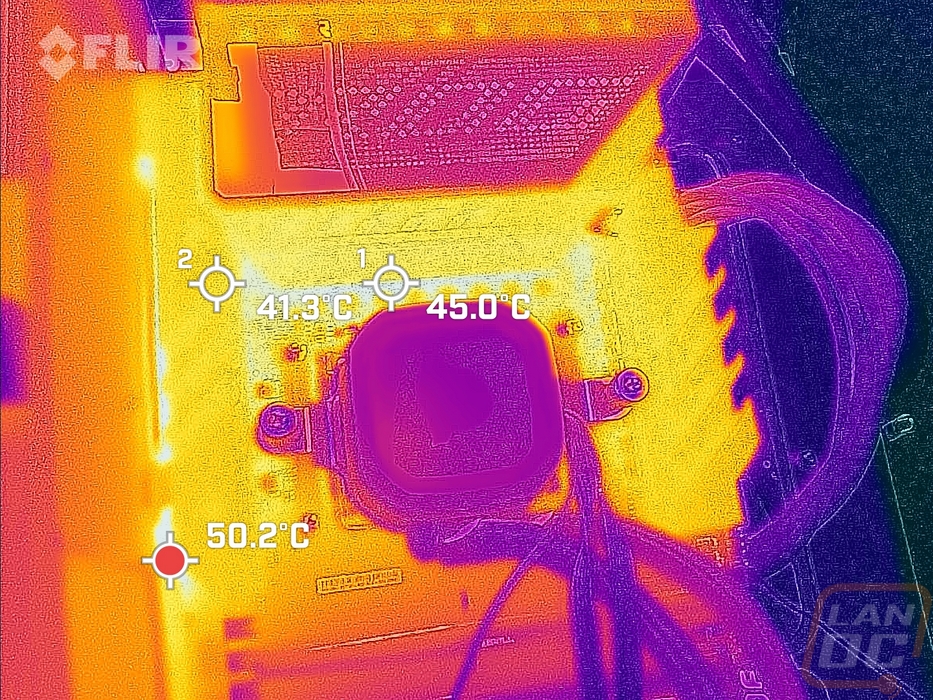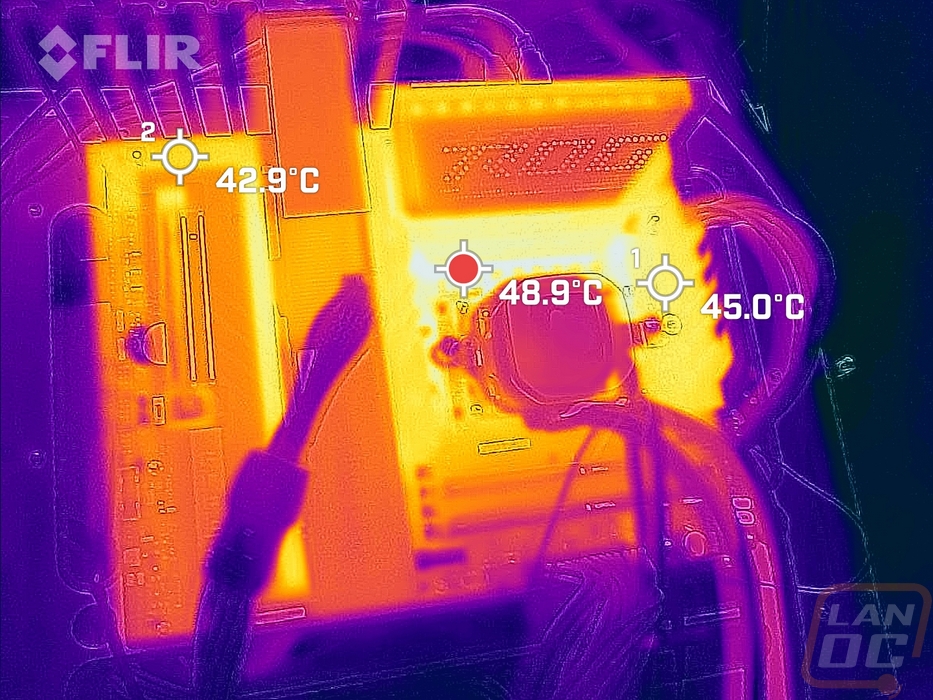Performance
When it comes to performance testing, typically motherboard to motherboard we aren’t going to see any big performance difference when running the same components and clock speeds. The exception to that is when boards are auto overclocking of course and there are a few areas where components can make a difference like with ethernet and USB controllers. For our X670 testing we don’t have any point of comparison so far to put the ROG Crosshair X670E Hero up against so I have just run it with the same 3070 GPU and 7700X used in CPU testing. I’m not expecting any of the standard tests to stand out in any way but we won't know for sure until we have more boards to test.
When it comes to network performance, however, those are numbers that we can compare with numbers from the past. The ROG Crosshair X670E Hero runs the now standard Intel 2.5G NIC which for some people has been known to have issues. More than anything I was surprised that a board of this level didn’t also have a 10G NIC, not that everyone has a 10G network at home. The wired testing went well and the NIC transferred files at 2317 Mbps which is in line with what I have seen in other tests. I then switched over to a new Wifi 6E access point with only the ROG Crosshair X670E Hero connected to it and ran the same test. This resulted in a transfer speed of 479.0 Mbps which to be fair is higher than I have seen in the past when testing standard Wifi 6, especially with Asus’s antenna design which the Hero still has. The Wifi 6E did connect at a speed of 2.4 Gbps through the windows network status page which is higher than I have ever seen before but as usual, real-world performance, especially for wireless is a lot less than what you see in a perfect situation.
|
3DMark – Fire Strike |
|||||
|
Motherboard |
Overall Score |
Graphics Score |
Physics Score |
||
|
Asus ROG Crosshair X670E Hero |
31533 |
34134 |
36091 |
||
|
3DMark – Time Spy |
|||||
|
Motherboard |
Overall Score |
Graphics Score |
CPU Score |
||
|
Asus ROG Crosshair X670E Hero |
13511 |
13401 |
14171 |
||
|
PCMark 10 Score |
|||||
|
Motherboard |
Overall Score |
Essentials |
Productivity |
Content Creation |
|
|
Asus ROG Crosshair X670E Hero |
8938 |
11238 |
11678 |
14766 |
|
|
Passmark PerformanceTest 10.0 - Overall Score |
|||||
|
Asus ROG Crosshair X670E Hero |
9764.2 |
||||
|
World War Z: Aftermath – Ultra Detail – Average FPS |
|||||
|
Asus ROG Crosshair X670E Hero |
229 |
||||
|
Tom Clancy’s Ghost Recon: Wildlands – High Detail - Average FPS |
|||||
|
Asus ROG Crosshair X670E Hero |
156.62 |
||||
|
Shadow of the Tomb Raider – High Detail - Average FPS |
|||||
|
Asus ROG Crosshair X670E Hero |
188 |
||||
|
Far Cry 6 – Ultra Detail - Average FPS |
|||||
|
Asus ROG Crosshair X670E Hero |
128 |
||||
|
Average Network Speed – WiFi 6E - Mbits/Sec |
|||||
|
Asus ROG Crosshair X670E Hero – Intel WiFI 6E |
479.0 Mbps |
||||
|
Average Network Speed – wired on 10G Network - Mbits/Sec |
|||||
|
Asus ROG Crosshair X670E Hero 2.5G Intel NIC |
2317 Mbps |
||||
While testing I did also get a few pictures of the RGB lighting on the ROG Crosshair X670E Hero which when compared to the Z690 Extreme that we use for our GPU test bench has a minimum amount of lighting. The board doesn’t have the underglow lighting or any lighting on the area over the chipset which I thought would be backlit given the mirrored finish and ROG logo but it isn’t. All of the lighting is on top of the rear I/O cover with the Polymo Lighting which has a holographic-like effect with multiple layers being lit up that looks great.



I also had the thermal camera out while testing and I would have preferred to do this testing with one of the Ryzen 9 CPUs but our samples of those CPUs aren’t coming in until launch day. Overall the 7700X does use a lot of power with the system pulling 230 watts when loaded in AIDA 64 with the FPU stress test that I ran for 30 minutes to get these images. You can see that heatsinks are taking in the heat but at 48c it is much cooler than the CPU.




